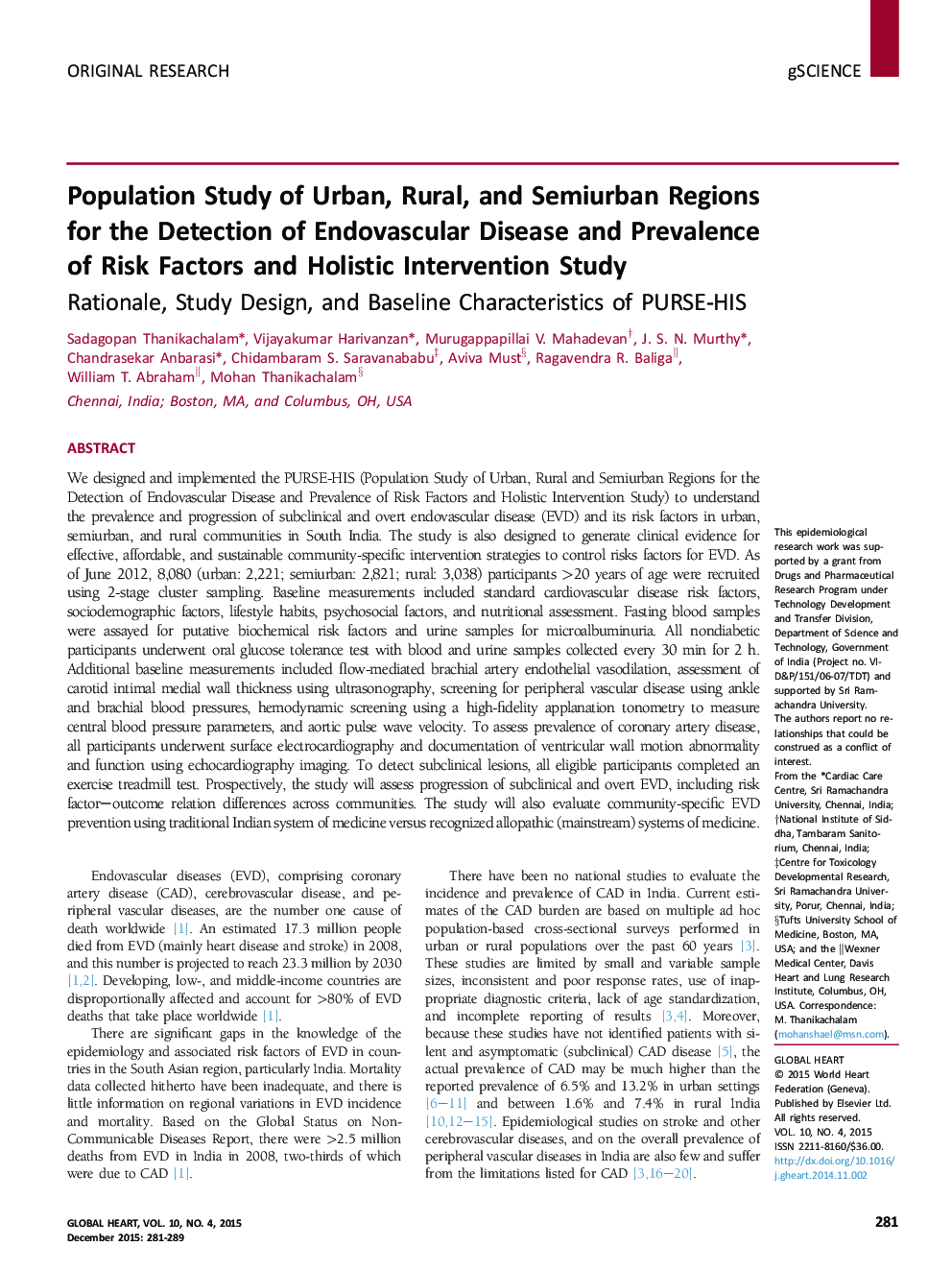| کد مقاله | کد نشریه | سال انتشار | مقاله انگلیسی | نسخه تمام متن |
|---|---|---|---|---|
| 5958611 | 1575720 | 2015 | 9 صفحه PDF | دانلود رایگان |

- We outline the design and methodology of the PURSE-HIS study in Tamil Nadu, India, to meet the following objectives:
- to estimate the prevalence of risk factors for endovascular disease (EVD) among the urban, semi-urban, and rural communities;
- to estimate the prevalence of overt EVD in urban, semi-urban, and rural communities;
- to estimate the prevalence of subclinical EVD by provocative testing in urban, semi-urban, and rural communities;
- to estimate the progression of subclinical and overt EVD in these communities, including an examination of how the risk factor-outcome associations vary across communities;
- to develop, implement, and evaluate EVD prevention strategies with an alternative system of medicine and/or recognized allopathic system of medicine.
We designed and implemented the PURSE-HIS (Population Study of Urban, Rural and Semiurban Regions for the Detection of Endovascular Disease and Prevalence of Risk Factors and Holistic Intervention Study) to understand the prevalence and progression of subclinical and overt endovascular disease (EVD) and its risk factors in urban, semiurban, and rural communities in South India. The study is also designed to generate clinical evidence for effective, affordable, and sustainable community-specific intervention strategies to control risks factors for EVD. As of June 2012, 8,080 (urban: 2,221; semiurban: 2,821; rural: 3,038) participants >20 years of age were recruited using 2-stage cluster sampling. Baseline measurements included standard cardiovascular disease risk factors, sociodemographic factors, lifestyle habits, psychosocial factors, and nutritional assessment. Fasting blood samples were assayed for putative biochemical risk factors and urine samples for microalbuminuria. All nondiabetic participants underwent oral glucose tolerance test with blood and urine samples collected every 30 min for 2 h. Additional baseline measurements included flow-mediated brachial artery endothelial vasodilation, assessment of carotid intimal medial wall thickness using ultrasonography, screening for peripheral vascular disease using ankle and brachial blood pressures, hemodynamic screening using a high-fidelity applanation tonometry to measure central blood pressure parameters, and aortic pulse wave velocity. To assess prevalence of coronary artery disease, all participants underwent surface electrocardiography and documentation of ventricular wall motion abnormality and function using echocardiography imaging. To detect subclinical lesions, all eligible participants completed an exercise treadmill test. Prospectively, the study will assess progression of subclinical and overt EVD, including risk factor-outcome relation differences across communities. The study will also evaluate community-specific EVD prevention using traditional Indian system of medicine versus recognized allopathic (mainstream) systems of medicine.
Journal: Global Heart - Volume 10, Issue 4, December 2015, Pages 281-289